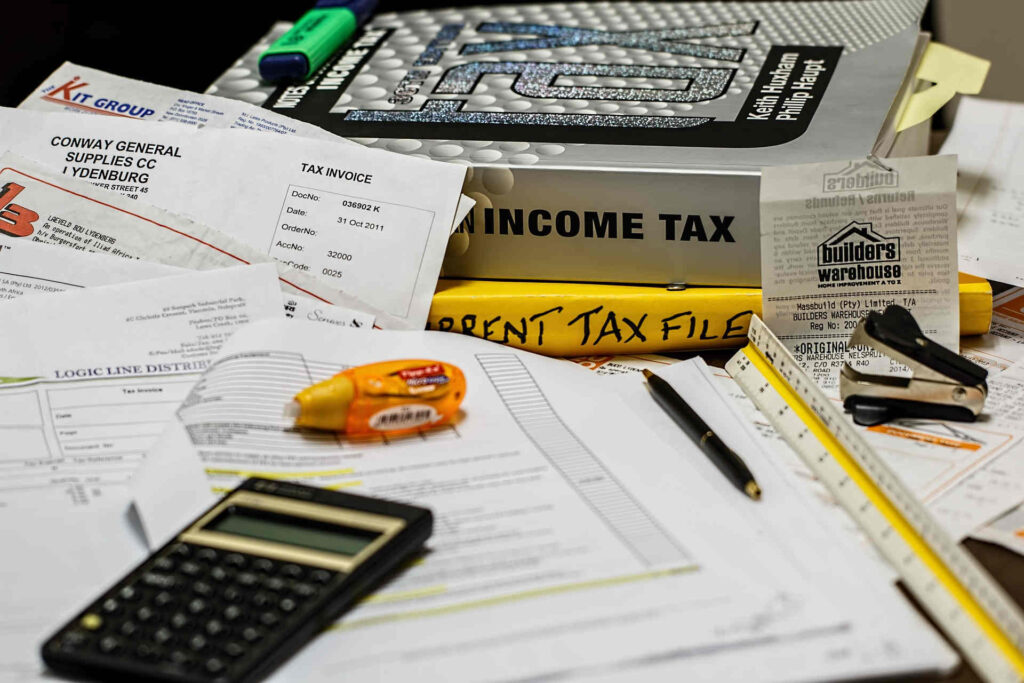Nine Super Avenues to Reduce Tax for Commercial Real Estate Investors
Real estate investors can enjoy significant tax benefits when investing in commercial property. Investment properties are eligible for many deductions, such as mortgage interest, property taxes, and operating expenses, and this can significantly impact the investor’s overall return on investment. Additionally, commercial real estate investment allows for portfolio diversification and potential price appreciation. Furthermore, commercial property depreciation is also a significant tax benefit for real estate investors since it reduces taxable income from the rental income generated from investment properties. In summary, commercial real estate investments offer many tax savings opportunities to real estate investors, including mortgage interest deductions, asset depreciation, and other operating expense deductions that can add to substantial savings over time.
Mortgage tax deductions are allowed for investment properties, and commercial mortgage interest is tax deductible, which helps the real estate owner to reduce income taxes on the investment property by deducting certain property management expenses and a portion of the interest costs. Additionally, real estate owners may take advantage of certain operating expenses related to their investment properties, such as repair and maintenance costs or property management fees. These deductions can help reduce an investor’s taxable income from commercial real estate investments. With proper planning and understanding of the applicable regulations, commercial real estate investors can maximize their tax savings through deductions for mortgage interest, depreciation, operating expenses, and other related costs associated with their investment properties.
The most common tax benefit for commercial real estate investors is the ability to defer income taxes through a 1031 exchange. This allows them to postpone paying taxes on an investment property’s sale and reinvest the proceeds into another property. Additionally, they can deduct loan interest and other expenses related to their rental properties from their taxable income. Depreciation of rental properties is also allowable, enabling them to write off a portion of their owner expenses over time.

Depreciation
Deprecation is a method of allocating the cost of a physical asset over its useful life. Business owners can use this accounting method to match expenses to revenues in the same reporting period and choose from straight-line or accelerated depreciation methods. – Depreciation refers to an accounting method that allocates the cost of tangible or physical assets over their useful life. This method of allocating such net cost is referred to as depreciation. All organizations are expected to use this accounting method to match expenses and revenues during the same year or period. There are two types of methods used for depreciation, straight-line and accelerated, depending on an organization’s needs.
With the straight-line depreciation accounting method, depreciation expenses are calculated by dividing the cost of an asset by its expected salvage value and spreading the value over multiple years. This allows a company to match its depreciation expenses with any related revenues. The accelerated method allows for realizing the entire cost of an asset in one year or over a shorter period than its expected salvage value.
Depreciation is an accounting tool used to create a depreciation schedule, which shows the depreciation expense deducted from the cost of a business asset over its expected life. Business owners must determine the multiyear period for their holdings to set their depreciation schedule. The salvage or scrap value is the estimated amount of cash businesses can expect from an asset at the end of its useful life. Salvage value is deducted from the cost of an investment and cannot be depreciated; only its original cost can be depreciated. Depreciation is used not only for tangible assets like buildings and machinery but intangible assets such as copyrights and patents. Because it reduces taxable income, depreciation usually benefits businesses in terms of taxes paid each year.

Accelerated/Bonus Depreciation
Accelerated or Bonus depreciation are great ways to reduce taxable income. Depreciation expenses are one of the significant tax benefits for rental property owners who invest in commercial real estate. A cost segregation study allows you to identify assets that qualify for accelerated depreciation which can be used for tax purposes. This technique accelerates the recovery period of certain assets and reduces the amount of taxable income in any given year.
Bonus depreciation allows property owners to deduct the total cost of capital improvements in the tax year they are made rather than spread them out over several years. This is an excellent benefit for real estate investors, as it helps to lower their taxable income and reduce their tax burden. Under IRS rules, bonus depreciation applies to new and used assets that meet specific requirements. It also applies to improvements made on existing properties, such as new roofs or HVAC systems.
Tax savings for commercial real estate investors, accelerated depreciation is an advantageous tax benefit. It allows investors to take a depreciation deduction that is larger than the actual cost of the property, giving them a significant tax bill reduction and increasing their cash flow. Furthermore, the Tax Cuts and Jobs Act of 2017 allowed for higher deductions on commercial property investments, creating a more attractive environment for real estate investors and allowing them to keep more of their income when they purchase an investment property by taking advantage of the accelerated depreciation benefit. In addition, mortgage interest payments are also deductible from taxes which can further reduce overall costs associated with owning and managing rental properties.
The Bonus Depreciation rule allows 100% for all qualified purchases between September 27, 2017, and January 1, 2023; starting in 2023, the bonus depreciation ramps down to 80%. Bonus depreciation will continue to ramp down for ensuing years: 60% for 2024, 40% for 2025, 20% for 2026, and 0% beginning in 2027.
Tax savings for commercial real estate investors through bonus depreciation significantly increase the present value tax. With bonus depreciation, property owners can deduct more of their investments in the qualified property during the bonus period and reduce their taxable net income. This bonus period generally lasts until January 2021, so investors can take advantage of this break before the upcoming tax years. The greater tax deductions offered by bonus depreciation now can lead to higher future income for real estate investors. By taking full advantage of the deductions available, these property owners can realize a higher return on investment than would have been possible without them. For example, if a commercial building has $50k in depreciable costs over its useful life and an investor takes full advantage of the deductions available with bonus depreciation, they may realize more than $10k in additional savings that would not have been available without it.
Bonus depreciation is a tax code provision that allows real estate investors to get immediate deductions on purchasing a new or used business property. Bonus depreciation includes rental property owners, who can take advantage of this tax cut and save tens of thousands of dollars annually on their rental income. The Tax Cuts and Jobs Act increased bonus depreciation from 50% to 100%, which means that in addition to the standard depreciation deduction available under the deductions section, investors can now take an additional 100% deduction on any new or used business assets purchased after September 27, 2017. This additional deduction applies to real estate and personal property, like furniture and fixtures within a commercial building. For example, if a commercial building has $50k in depreciable costs over its useful life and an investor takes full advantage of the deductions available with bonus depreciation, they may realize more than $10k in additional savings that would not have been available without it.

Installment Sale
An installment sale agreement allows taxpayers to save on capital gains taxes by allowing the seller to receive income from the sale of the property over an extended period. The seller pays a portion of the sale price and receives a portion of their income at regular intervals over an extended period. This way, they can reduce or even eliminate their taxes on capital gains as they can spread their income over time and put it into a lower tax bracket.
By breaking up the sale of investment property, sellers can also put more money in their pockets and break up the large lump sum payment into smaller payments that are easier to manage. This service allows taxpayers in higher tax brackets to defer their taxes until they are in a lower bracket, thus saving them money in taxes while still receiving all the profits from selling their investment property.
A buyer makes payments over a period of time for the purchase of the asset (real estate) by “structuring an installment sale.” An installment sale allows taxpayers to use the proceeds from selling their real estate to pay off their capital gains taxes and other tax liabilities without liquidating any assets. An Installment sale helps spread out the income from the sale of the property over a period of time, helping to reduce overall tax liability. Investors who sell capital assets are typically taxed on any gains they make. When using an installment sale, these taxes can be deferred and spread out over a longer period.

Cost Segregation
Cost Segregation is a specialized tax strategy that can help real estate owners reduce their overall tax liability. Cost segregation helps to increase cash flow by reducing income taxes and state income taxes through accelerated depreciation deductions. The process can be used by real estate owners who have recently purchased or constructed a commercial building to reduce their overall liability and increase their depreciation deductions.
Strategic tax planning through cost segregation is a process of reclassifying a commercial building’s construction costs into separate categories for depreciation purposes. This study can help property owners identify land improvements, personal property, and building components that may be depreciated over shorter periods than the regular 39-year schedule allowed for commercial buildings. A reasonable cost segregation study can significantly increase the tax savings in the early years of ownership for commercial property owners, allowing them to pay lower yearly taxes by reducing their liabilities. Cost segregation also enables property owners to defer taxes until later years when cash flow from their real estate investments may be more significant and better able to handle the additional liability.
Cost segregation provides distinct tax advantages to commercial and residential properties that can be realized through the acceleration of depreciation deductions. Cost segregation studies separate land improvements, building components, exterior components, and personal property into shorter recovery periods, accelerating the recovery of capital investments. Property owners can benefit significantly from cost segregation by accelerating their depreciation deductions on building components such as walls, interior partitions, HVAC systems, and other items with extended recovery periods. With cost segregation studies, property owners can recover more of their capital investments in a shorter period, thus creating more significant tax savings for commercial real estate investors.

Qualified Business Income
The Jobs Act 20% Pass-Through Deduction is a new tax law that allows some business owners to deduct up to 20 percent of their qualified business income from their federal income tax. This law was passed to cut taxpayers’ taxes, allowing them to subtract this percentage from their taxable income. The deduction was designed to exclude taxpayers who earn more than $157,500 if single or $315,000 if married and filing jointly. This deduction also applies when the individual owns pass-through businesses such as partnerships, S corporations, and sole proprietorships. The pass-through deduction is calculated based on the taxpayer’s qualified business income, reduced by the sum of any net capital gains and losses and any guaranteed payments made to the taxpayer during the tax year.

Other Benefits of the Jobs Act
The Tax Cuts and Jobs Act (TCJA) of 2017 is a comprehensive tax reform bill that lowers taxes for individuals and businesses. It does this by reducing the number of tax brackets from seven to four, lowering marginal tax rates, increasing the standard deduction, limiting itemized deductions, and eliminating some exemptions. The individual income tax rate was reduced to 10%, 12%, 22%, 24%, 32%, 35%, and 37%. In addition, the alternative minimum tax (AMT) was repealed for individuals making less than $500,000 per year ($1 million for couples). Additionally, the law lowered marginal tax rates on certain investments, such as dividends and long-term capital gains. The TCJA also included cuts to the child tax credit, which doubled from $1000 to $2000 per child, and an increase in the standard deduction from $6200/$12400 to $12000/$24000 for single/married filers, respectively, which means taxpayers can take a larger deduction against their taxable income without having to itemize expenses like charitable contributions or medical costs.
The Jobs Act includes many considerable changes to the tax code, including a significant tax cut for all taxpayers. Under the new law, corporations are required to pay a much lower corporate tax rate than before. Additionally, domestic investment incentives have been increased to encourage businesses and individuals to invest more money at home. These incentives also include new minimum taxes on estate taxes and other forms of income that are not subject to ordinary taxation procedures. Furthermore, the standard deduction has been doubled to reduce taxable income for most taxpayers and make filing easier.
When investors sell investments, they are typically hit with capital gains taxes. Under the Jobs Act, these taxes have been eliminated for assets held for more than seven years, allowing investors to take full advantage of their investments’ market value without paying additional taxes. Investors can also take advantage of tax cuts by rolling their capital gains over into one real estate investment and avoiding taxes altogether. Additionally, investors can use depreciation deduction to reduce the cost basis of a property’s value and roll capital gains over into another investment after seven years. This strategy helps investors maintain their capital while avoiding taxes on their investments’ profits.

Operating Expenses
These deductions can include mortgage interest, property taxes, depreciation, operating expenses, and interest on loans. – Real estate investors may be able to deduct specific expenses associated with their investment business, including advertising fees, office space rental expenses, and management fees. Insurance and property management fees for purchasing and operating an investment property may also be deductible. Tax savings for commercial real estate investors opens additional tax deductions for many real estate investments. By taking advantage of these tax deductions, real estate investors can increase their return on investment by reducing their overall taxes paid for each purchase of an investment property.

1031 Exchange
Real estate investors often use a 1031 exchange to defer gains tax on their investment property. This deferral methodology allows them to purchase active real estate while rolling capital gains from relinquished properties into the new asset. When done correctly, this exchange can eliminate the investor’s tax liability and allow them to reinvest their funds without paying any taxes on their profits. For the process to be valid, the investor must identify replacement properties within 45 days of selling their relinquished property, with all funds going towards purchasing those new assets. This process benefits many real estate investors looking to increase and diversify their portfolios without facing substantial capital gains tax liabilities when buying and selling properties.
A 1031 exchange is a process outlined by the Internal Revenue Service (IRS) under Section 1031 of the U.S. Tax Code, which allows an investor to defer capital gains taxes when exchanging investment property for another investment property of equal or greater value for investment purposes. A 1031 exchange requires that all properties involved in the transaction be used for “like-kind” exchanges, meaning that real property must be exchanged for other real property. There are specific time limits with this type of exchange, and it is essential to meet all IRS guidelines to qualify as a valid 1031 exchange. This tax deferment can provide investors with substantial savings on capital gains taxes and allow them to acquire more valuable properties while deferring those taxes until they decide to sell the new asset.

LIHTC, HTC, AND NMTC
The Low-Income Housing Tax Credit (LIHTC), Historic Tax Credit (HTC), and New Markets Tax Credit (NMTC) are government-sponsored programs that encourage private investors to make qualified investments in income communities. They incentivize private capital investment in community development projects by offering tax credits to the credit investor. These programs have been used to finance housing agencies, specialized financial intermediaries, and other community facilities. Equity investments provided by these intermediaries, Community Development Entities (CDEs), are often combined with loans from banks or other lenders to finance projects for the benefit of low-income communities. The federal tax credits offered through these programs can be used as a source of equity investment for low-income housing, business expansion, healthcare facilities, and some manufacturing or retail businesses.
The Low-Income Housing Tax Credit (LIHTC) program is the largest source of new affordable rental housing in the United States. This program provides tax credits to investors that finance low-income housing projects’ development, acquisition, and rehabilitation. The Historic Tax Credit (HTC) Program helps to revitalize communities by providing incentives for private investment in historic rehabilitation projects. Investors can access credit financing through these credits in exchange for investing in specific historical projects. Finally, the New Markets Tax Credit (NMTC) Program seeks to promote economic revitalization and investment in low-income communities by providing tax credits for investments made into businesses and real estate projects located within those areas. These programs offer tax incentives for developers participating in historic transformational rehabilitation, energy credits, or other market tax credit investments.
The Low Income Housing Tax Credit (LIHTC) program offers investors a tax credit based on the cost of developing or acquiring affordable rental housing. In addition, the Historic Tax Credit (HTC) program provides a tax credit to support the rehabilitation of historic properties.

Opportunity Zones
Opportunity Zones are economically-distressed communities located in all 50 states, the District of Columbia, and five U.S. territories where new investments, under certain conditions, may be eligible for preferential tax treatment. Governor Greg Abbott has nominated over 200 eligible Texas census tracts to the U.S. Treasury to become Opportunity Zones this year – the highest number of nominations from a single state for 2019.
Opportunity Zones are an economic development program encouraging private sector investments into low-income neighborhoods. The zones program, part of the Tax Cuts and Jobs Act of 2017, offers tax cuts and other incentives for long-term investments in designated opportunity zones. This alternative economic development strategy is designed to spur economic growth and job creation in income communities. The program’s goal is to encourage private investments in underserved areas to create jobs, promote business growth, and provide better services for residents. By providing tax breaks and other benefits to investors looking to make long-term investments in these zones, it is hoped that more jobs will be created, as well as an increase in wages for those who live there.
Opportunity Zones encourage investors to put their capital gains into these low-income communities. The Opportunity Fund is an investment vehicle for pooling investor money, which must be invested in businesses or real estate inside the designated zones. The participation rate has been high among investors who want to take advantage of the tax cuts and other incentives given to those who invest in these zones. Investing in these low-income communities, investors are helping spur economic development by providing jobs and increasing wages while earning some tax breaks on their federal capital gains taxes. With more investment into Opportunity Zones, the local economies will improve, leading to better job prospects, higher wages, and overall economic growth.

Summary
Tax savings for commercial real estate investors can be quite significant. Tax deductible expenses include the interest costs associated with the commercial mortgage, property repairs, and depreciation expenses. These tax incentives allow real estate owners to lower their income taxes as they are not taxed on these items. Additionally, mortgage interest paid on commercial mortgages is tax deductible which helps to reduce the amount of income taxes paid by real estate owners.
Property owners who purchase, own, and manage commercial real estate properties can deduct their property insurance and taxes from their income statement. Mortgage interest and property management fees are also deductible. Additionally, when commercial real estate investors sell their investments, they may be able to exclude portions of the capital gains on the sale of the investment property from their income taxes if they qualify for specific requirements under IRS regulations.
By understanding these deductions and keeping detailed records of all related expenses associated with owning and managing rental properties, real estate investors can save significant amounts on their income taxes while still making a good return on investment from owning commercial real estate.

Confused and Uncertain?
With so many investment options, confusion as to where to invest leads to inaction. Schedule a FREE – NO OBLIGATION – NO STRINGS ATTACHED call. Or email me with your questions and thoughts at allen@SteedTalker.com. I’ll help you sort it all out, and you’ll soon be on your way to prosperous investing to live more abundantly in all areas of life.
Abour the Author -- Dr. Allen Lomax
 With careers in academia, podcasting, and real estate investing, Dr. Allen Lomax inspires us to break open our minds’ secrets to discover individual and universal well-being.
With careers in academia, podcasting, and real estate investing, Dr. Allen Lomax inspires us to break open our minds’ secrets to discover individual and universal well-being.
Through passive real estate investments, he helps enlightened investors create time freedom to live abundantly in all life’s areas.



